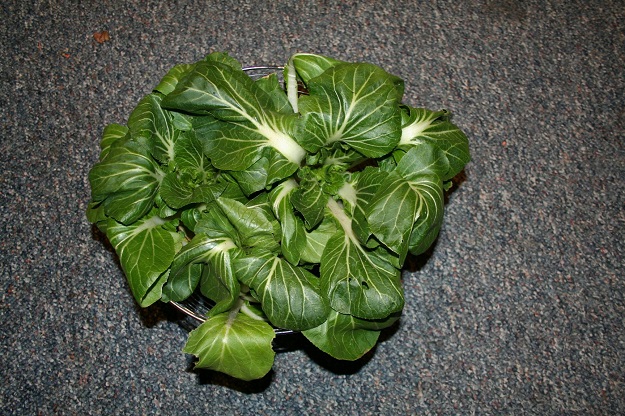Let’s continue with an introduction to extending our vegetable gardening season into the late fall and early winter. In a previous article, I suggested that we rethink our approach to vegetable gardening to set the stage for an extended season. Then, we explored some of the characteristics of many vegetables that are candidates for helping us extend our season for growing and harvesting. This article looks at generally how an extended harvest is accomplished.

The specific approach necessary for your success will require a bit of experience on your part, but I can get you off to a good start by summarizing how to do it and highlighting some of my experiences. Once you start enjoying successful harvests in early spring, late fall, and early winter, you’ll want to push the envelope a bit and do some fine tuning on your own. I encourage you to do just that. Many of us learn best by doing.
Let’s get ourselves prepared for success during the “off season” by learning about the basics. To be successful, we need to understand what we’re trying to do and how to do it. It’s essential that we clearly understand that we’re not trying to grow vegetables in the cold weather so much as we’re merely trying to harvest them. Sure, some growth takes place, especially among the very cold hardy varieties, but in most cases, we’re simply trying to extend the season of harvest so we’re able to provide fresh vegetables outside the normal growing season. Let me focus primarily on the late harvest aspect of vegetable gardening since it’s the easiest to explain and understand.
To have mature vegetables by late fall we need to start them in time to allow sufficient growth before their growing season comes to an end. We can plant in the spring and carry fully matured plants into the winter, or we can plant in mid to late summer and bring newly matured plants into the off season. It’s essential that we time the planting of crops so they are mature, or nearly so when temperatures drop and sunlight hours diminish, as these characteristics of approaching winter can sustain plant life, but they can’t effectively support growth.
There are several technical issues to address when extending our season of harvest. How we protect, hydrate and harvest are all important for success. Let’s look at how they work together to extend the season.
Protection
Most important for success is protection. Many of the cold hardy plants we hope to grow will perish without protection from Old Man Winter. There are various approaches that we can take. My experience centers on unheated greenhouses as they give me an opportunity to protect my winter harvest and protect me while I harvest in the winter. Equally important, winter vegetable gardening gives me an opportunity to put my greenhouse assets to work during a time of year that they might normally be idle.
Typically, greenhouses offer a single layer of protection, and that works well for late fall and early winter. For success in colder climates and late into the winter, you’ll likely need additional protection from clear plastic row covers, cold frames, or individual plant covers that let in light but provide “dead air” space around the plant. With each layer of protection, you increase the chance that temperatures around your plants will be more conducive to survival.
Keep in mind that adding layers of clear coverings also blocks out a small percentage of light. Roughly 10 percent of incoming light is diminished with each layer. Even if the material appears clear, light transmission is inhibited to some extent, so try to limit your protection to only two layers. Remember that sunlight hours in the late fall and winter are already limited, so we don’t want to inhibit what little light is offered.
Also, be certain to allow some air exchange on sunny days when row covers, cold frames and other protection will trap in too much energy and “cook” your vegetables. The danger of this is most likely in late fall and early winter but is less of a threat in the dead of winter when ambient temperatures and wind tend to keep things cool, regardless of what level of solar gain is offered to your plants.
Watering
The next issue to tackle is watering. It’s really very simple – don’t do it! It seems unnatural to hold back water from your plants, but it’s the second most important aspect of winter vegetable gardening to understand and get right. It’s also the most difficult part to get right because you have to match watering with the weather and unless you have a crystal ball that allows you to forecast what’s in store for the next month or so, you’ll have to do some good guessing to get it right.
The idea behind withholding water is simply that water freezes. Less water retained by your plants means less freezing inside the plant cells. It’s freezing that ruptures cell walls and turns your plants into limp, dark, wilted and drooping versions of what they once were. The key is to stop watering before the first frosts and let natural soil moisture sustain your plants during the cold weather.
If you withhold water too soon, your plants will dry out and suffer. If it’s too late when you stop watering, you’ll likely risk freeze damage to plants. When in doubt about soil moisture, dig down a few inches and see for yourself if the soil is damp. Typically, soil can hold moisture for a long time. That’s why soil freezes solid in the winter.
I lightly water near the end of the traditional growing season and stop watering altogether about a week or two before the first frost.
Harvesting
The last issue to deal with is harvesting. Remember, your plants are going “where no plant has gone before” – below freezing and perhaps well below zero Fahrenheit. It’s a different environment, so you’ll have to respect that when it comes to harvesting. You need to allow your plants some recovery time before harvest.
The idea here is to harvest when temperatures inside the layers of protection have been above freezing for a while. I like to harvest when temperatures are as warm as they can be – well above freezing for several hours. Sometimes that means I postpone harvest until there is a day with lots of sunshine that helps sustain temperatures inside the greenhouse of around 50 degrees F for a few hours.
The whole idea of harvesting after below zero weather sounds a bit far-fetched, but I’ve done it even after nighttime lows of minus 15 F. Just to keep this in perspective, minus 15 F is well below freezing: it’s 46 degrees below freezing! If I can harvest cold hardy vegetables after such bitter cold temperatures, just think what you can do if you live in a climate where teens and twenties are more representative of the lows.
As you become more experienced with “off season” vegetable gardening, you’ll likely become more successful and this will help continue to encourage you in this cold weather horticultural adventure.
Clair Schwan is an experienced vegetable gardener who grows over 100 types of fruits and vegetables in unheated homemade greenhouses and open sun garden beds.
Related Articles & Free Email Newsletter
3 Great Types of Year-Round Greenhouse Produce



Comment here